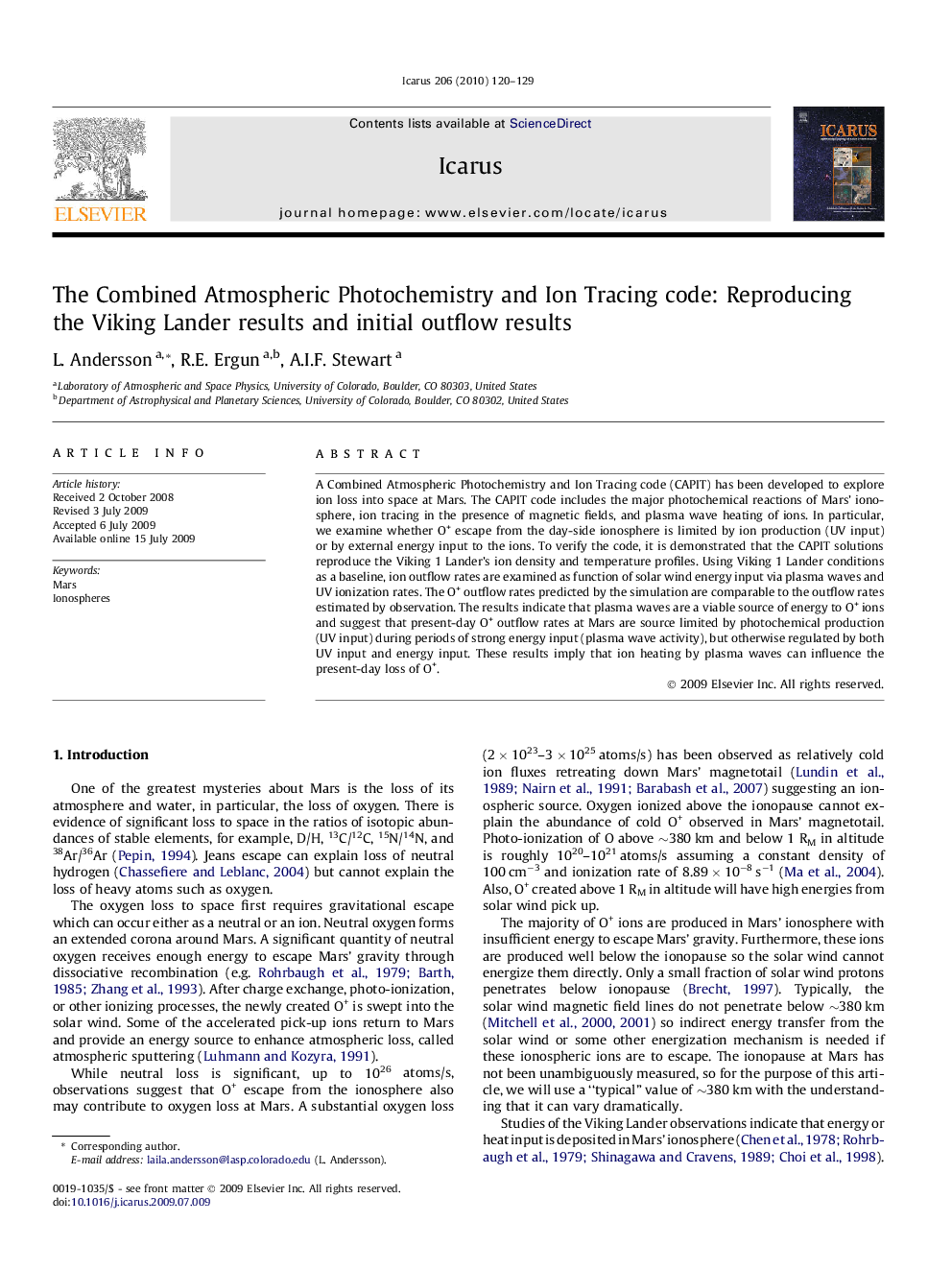| Article ID | Journal | Published Year | Pages | File Type |
|---|---|---|---|---|
| 1774715 | Icarus | 2010 | 10 Pages |
A Combined Atmospheric Photochemistry and Ion Tracing code (CAPIT) has been developed to explore ion loss into space at Mars. The CAPIT code includes the major photochemical reactions of Mars’ ionosphere, ion tracing in the presence of magnetic fields, and plasma wave heating of ions. In particular, we examine whether O+ escape from the day-side ionosphere is limited by ion production (UV input) or by external energy input to the ions. To verify the code, it is demonstrated that the CAPIT solutions reproduce the Viking 1 Lander’s ion density and temperature profiles. Using Viking 1 Lander conditions as a baseline, ion outflow rates are examined as function of solar wind energy input via plasma waves and UV ionization rates. The O+ outflow rates predicted by the simulation are comparable to the outflow rates estimated by observation. The results indicate that plasma waves are a viable source of energy to O+ ions and suggest that present-day O+ outflow rates at Mars are source limited by photochemical production (UV input) during periods of strong energy input (plasma wave activity), but otherwise regulated by both UV input and energy input. These results imply that ion heating by plasma waves can influence the present-day loss of O+.
